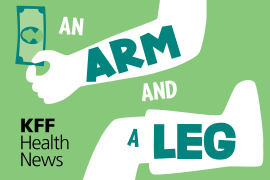Zimbabwe Data Showing Drop in HIV Prevalence Represents Correction of Previous Estimates, Not Actual Drop in Rate
HIV/AIDS experts in Zimbabwe on Sunday announced that figures released last week by the government showing a drop in the number of HIV-positive people in the country did not represent a real drop in the prevalence of the disease but a correction of flawed figures from previous surveys, Zimbabwe's Daily News reports (Daily News, 8/25). Zimbabwean officials on Aug. 21 released new national HIV/AIDS prevalence data that indicated a possible drop in the number of HIV-positive people in the country. According to the report, 1.82 million of the nation's 14 million people are living with HIV/AIDS. The figures, compiled using surveys conducted by local experts with technical assistance from the CDC, WHO, UNAIDS and the Imperial College of London, show that 24.9% of Zimbabwean adults are HIV-positive, down from 33.7% in 2000, as reported by UNAIDS. In 2001, UNAIDS had predicted that the country would have 2.3 million HIV-positive people by 2003. Zimbabwe Health Minister David Parirenyatwa said that the new data suggest that HIV prevalence in prenatal clinic surveys peaked in 2000 at 34%, fell in 2001 to 30% and decreased further in 2002 to 25.7% (Kaiser Daily HIV/AIDS Report, 8/22). "My understanding is that the new figures do not necessarily reflect a decline in HIV prevalence, but rather a downward adjustment in measurement of prevalence from previously flawed estimates," Chuck Szymanski, deputy director of Population Services International's Zimbabwe office, said. Sara Page, an official in the Southern Africa AIDS Information Dissemination Service, said that the figures are not conclusive and that further research is needed. She added that the government "should not relent" in its AIDS prevention and education efforts, according to the Daily News (Daily News, 8/25).
This is part of the Morning Briefing, a summary of health policy coverage from major news organizations. Sign up for an email subscription.





